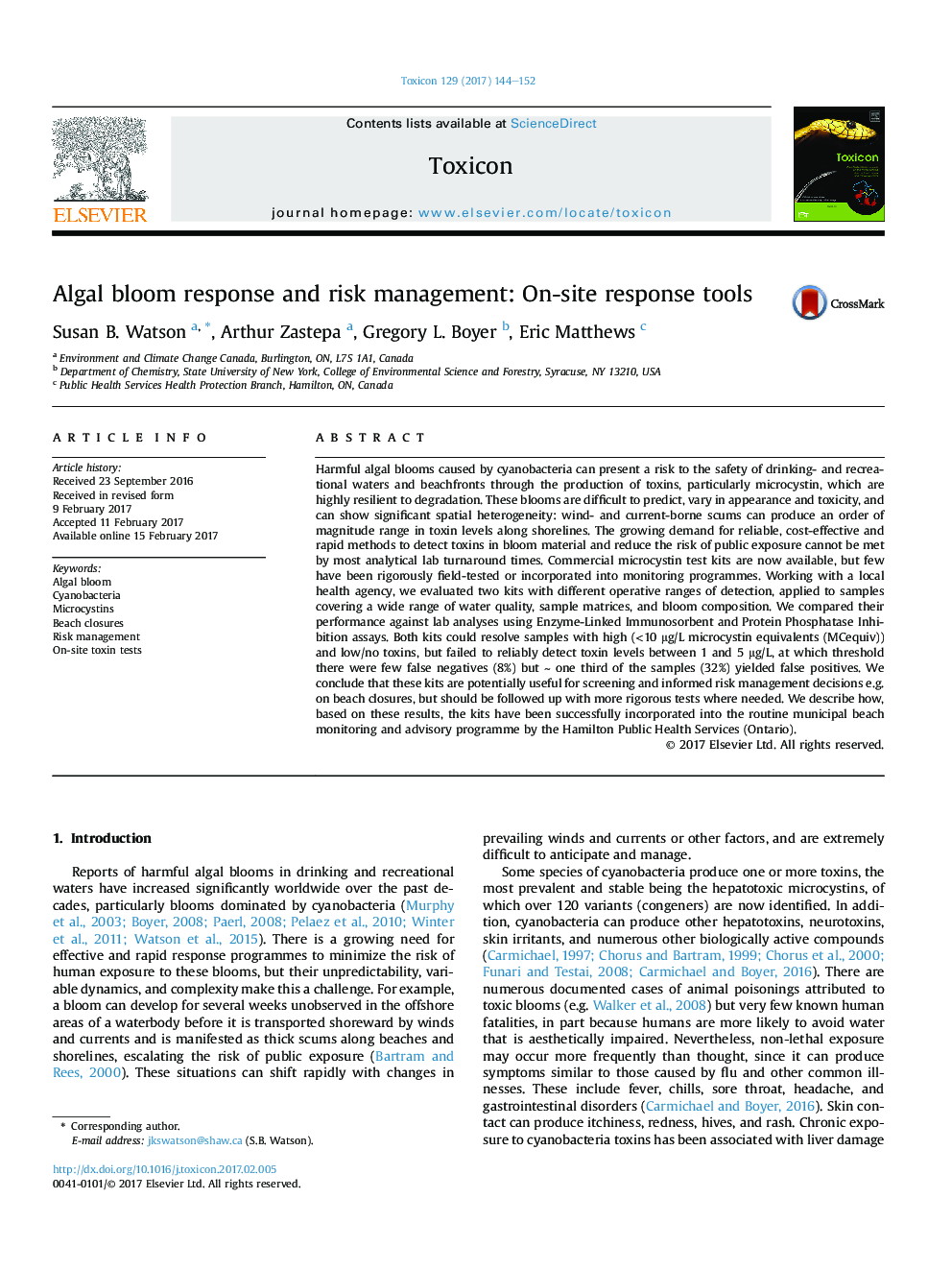| کد مقاله | کد نشریه | سال انتشار | مقاله انگلیسی | نسخه تمام متن |
|---|---|---|---|---|
| 5519409 | 1544107 | 2017 | 9 صفحه PDF | دانلود رایگان |
- Demand for reliable, rapid detection of algal toxins cannot be met by lab turnaround times.
- We evaluated two on-site commercial microcystin test kits against lab analyses using ELISA and PPIA.
- Samples included a wide range of algal biomass and toxins from the Great Lakes.
- Both kits resolved high vs. low/no microcystin levels but yielded 33% false positives below 5 μg/L.
- The kits can inform decisions on beach closures and quantitative lab follow-up.
Harmful algal blooms caused by cyanobacteria can present a risk to the safety of drinking- and recreational waters and beachfronts through the production of toxins, particularly microcystin, which are highly resilient to degradation. These blooms are difficult to predict, vary in appearance and toxicity, and can show significant spatial heterogeneity: wind- and current-borne scums can produce an order of magnitude range in toxin levels along shorelines. The growing demand for reliable, cost-effective and rapid methods to detect toxins in bloom material and reduce the risk of public exposure cannot be met by most analytical lab turnaround times. Commercial microcystin test kits are now available, but few have been rigorously field-tested or incorporated into monitoring programmes. Working with a local health agency, we evaluated two kits with different operative ranges of detection, applied to samples covering a wide range of water quality, sample matrices, and bloom composition. We compared their performance against lab analyses using Enzyme-Linked Immunosorbent and Protein Phosphatase Inhibition assays. Both kits could resolve samples with high (<10 μg/L microcystin equivalents (MCequiv)) and low/no toxins, but failed to reliably detect toxin levels between 1 and 5 μg/L, at which threshold there were few false negatives (8%) but â¼Â one third of the samples (32%) yielded false positives. We conclude that these kits are potentially useful for screening and informed risk management decisions e.g. on beach closures, but should be followed up with more rigorous tests where needed. We describe how, based on these results, the kits have been successfully incorporated into the routine municipal beach monitoring and advisory programme by the Hamilton Public Health Services (Ontario).
Journal: Toxicon - Volume 129, April 2017, Pages 144-152
